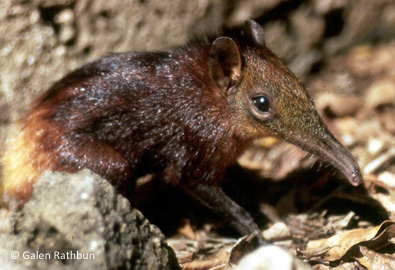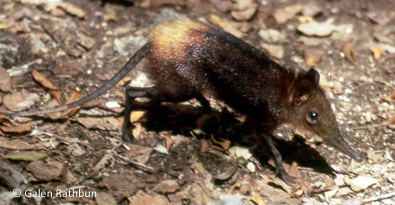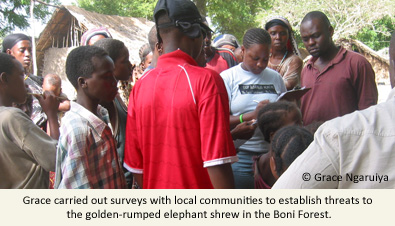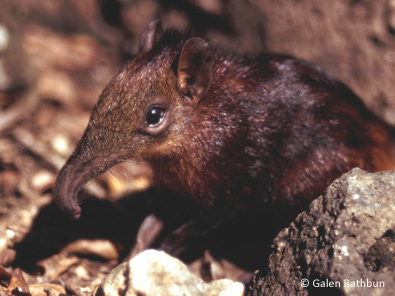EDGE mammal number 46, the remarkable golden-rumped elephant-shrew, is the Species of the Day!
Elephant-shrews (or sengi’s) are so-named because they have long, flexible trunks, and when you see them in action they are actually surprisingly elephantine! Funnily enough, recent studies show that elephant shrews are in fact more closely related to elephants than to the shrew and hedgehog family with which they had been traditionally associated.
The golden-rumped elephant shrew is the largest species in the group, at about the size of a small cat, with long spindly legs and, as its name suggests, a distinctive golden-coloured bottom.
Unusually for a small mammal, golden-rumped elephant shrews are monogamous, pairing with their partner elephant-shrew until one of them dies. Each pair has its own territory which they defend sex-specifically.
Threatened primarily by habitat destruction, the golden-rumped elephant shrew’s forest habitat has become highly fragmented, and most remaining areas are thought to be too small to support viable populations. The only sizeable areas of forest are under pressure from practices such as tree and pole cutting, and encroachment for agriculture. Elephant-shrews are known to shelter from predators in hollow trees. However, many of the trees favoured by the species are being removed by woodcarvers who supply the tourist industry with carvings of African wildlife. The removal of these trees mean less hiding places for the elephant-shrews, making them more vulnerable to predators – both natural and introduced (e.g. dogs).
The EDGE of Existence programme has supported a young Kenyan scientist, Grace Wambui Ngaruiya, through the EDGE Fellows programme. Grace assessed the status and population size (presence, distribution and abundance) of the golden-rumped elephant-shrew in the poorly known Boni and Dodori Forests on the Kenya-Somalia border. She also gathered critical data on the threat processes impacting the habitats and elephant-shrew populations in this region, one of the two major sites this elephant-shrew is found along with the Arabuko-Sokoke Forest further south.
To help conserve remarkable and overlooked species and to support young aspiring conservationists, please become an EDGE Champion or donate here.



